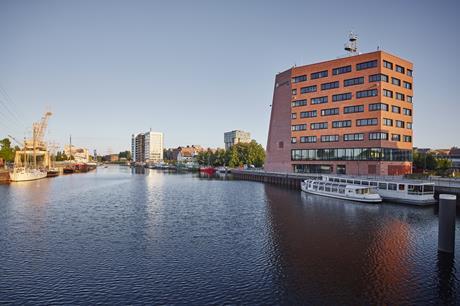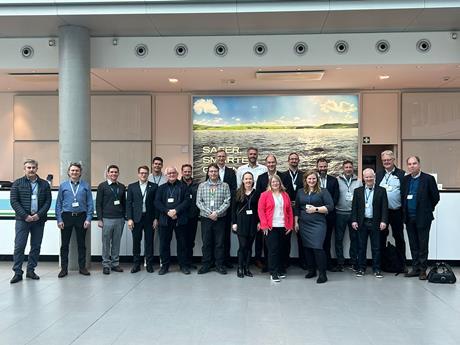TECHNICAL VISIT
This year, on 27th November, Propulsion and Future Fuels delegates are invited to visit the Fraunhofer - Centre for Maritime logisitics and services (CML) for an exclusive technical tour. The programme offers valuable insights into cutting-edge maritime research and innovation.
Delegates will enjoy a coffee on arrival and an introductory presentation, followed by the following demonstrations:
Radio and bridge laboratory
The radio and bridge laboratory at the Fraunhofer CML combines two things in one: the antenna system and the classed bridge system, which makes the research building technically a real seagoing vessel - the stone ship in the middle of Harburg’s inland port.
Ship navigation simulator
A concept for an autonomous merchant ship was the starting point for the development of a range of technologies that have since been further developed and tested using the CML’s ship simulators.
Examples of mobile robotics
High-Precision Measurement Technology and Sensors for Automated Processes and Robotics.
The demonstrations are expected to last 10-15 minutes each and will be delivered in English.

In 2024 the Propulsion & Future Fuels Technical visit took place at DNV
DNV welcomed Propulsion & Future Fuel delegates to their Hamburg office for an in-depth exploration of digital twin technology, featuring a mix of presentations, live demonstrations, and discussions on its transformative potential. Following a welcome by Rasmus Stute, Dr. Pierre Sames highlighted the central role of digital twins in DNV’s services, while Claudia Ohlmeier’s tour of DNV’s operation centre offered a real-world view of their application. Presentations by André Kauffeldt and Claas Rostock showcased how digital twins enhance decarbonisation, safety, and secure collaboration across industries.
The event concluded with future-focused sessions on autonomous navigation and simulation assurance, led by Cesar de Carvalho and Claas Rostock, followed by an engaging Q&A with Sergey Gribanov. Key takeaways included the technology’s power to optimise design, construction, and operations, as well as the need for trustworthy, collaborative environments. Attendees left with a deeper understanding of digital twins’ growing role in shaping safer, smarter, and more sustainable industries; a journey DNV continues to drive forward. You can read more here.



